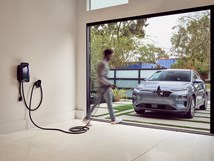How to Engineer a Planetary Rover
When it comes to vehicle development, Quality, Durability and Reliability are key.
When it comes to vehicle development, Quality, Durability and Reliability are key.
When it comes to developing vehicles that aren’t really going to operate until they are on another planet, QDR is essential, lest one be left with a highly expensive sculpture.
So, how does one create products that there is a high level of confidence in without having the ordinary sorts of testing that is performed on terrestrial vehicles?
One way is through Hardware in the Loop (HIL) simulation.
.jpg;maxWidth=600)
Development work of this nature is being done by people within the Mechanical and Mechatronics Engineering Dept. at the University of Waterloo in Canada. There, the behavior of solar-powered planetary rovers—before physical prototypes exist—are put through their paces in a simulated manner. Component testing is performed with a computer model that makes the actual piece of hardware under test “think” that it is under the “real” conditions. Like being on Mars rather than in Ontario.
To perform this work, the researchers use MapleSim from Maplesoft.
Listen to Dr. Amir Khajepour, Canada Research Chair in Mechatronic Vehicle Systems and professor of Engineering at the University of Waterloo: “Due to the multidomain nature of the system [mechanical, electrical and thermal], it was desirable to model all the components within one modeling environment such that critical relationships can be easily discovered. In addition, computational efficiency is crucial in real-time simulations.” And he went on with a bit of a testimonial: “MapleSim was found to be the ideal environment for this application due to its multidomain abilities, use of symbolic simplification for higher computational efficiency and ease of connectivity to LabVIEW.”
Clearly, developing rovers is a highly demanding, complex undertaking. Just like sedans and light trucks.
Think, however, how useful this sort of HIL testing would be for Earth-bound vehicles.
RELATED CONTENT
-
On Automotive: An All Electric Edition
A look at electric vehicle-related developments, from new products to recycling old batteries.
-
Jeeps Modified for Moab
On Easter morning in Moab, Utah, when the population of that exceedingly-hard-to-get-to town in one of the most beautiful settings on Earth has more than doubled, some people won’t be hunting for Easter eggs, but will be trying to get a good look at one of the vehicles six that Jeep has prepared for real-life, fast-feedback from the assembled at the annual Easter Jeep Safari.
-
Increasing Use of Structural Adhesives in Automotive
Can you glue a car together? Frank Billotto of DuPont Transportation & Industrial discusses the major role structural adhesives can play in vehicle assembly.


.jpg;width=70;height=70;mode=crop)






